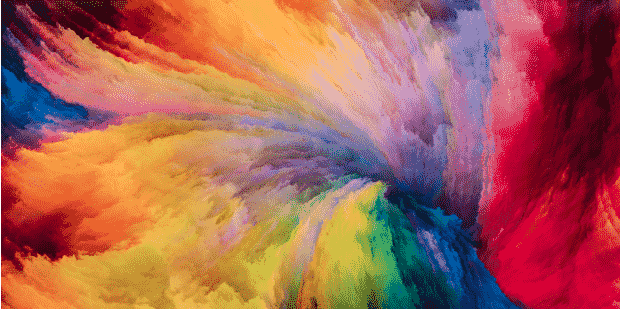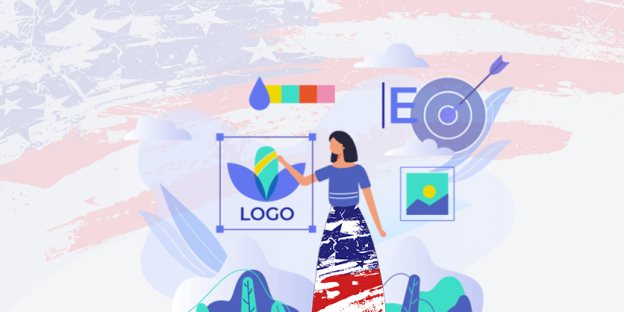The Fundamentals of Understanding Color Theory

We use color in every aspect of life, but when it comes to choosing one color then it depends on both the science & the art of how we will use that color. It also explains how humans include colors in their lives and the visual effect of how colors to mix, match or contrast with each other.
The colors are also used to communicate with others as the right color can play with the mind of people. All this can be explained through the color theory. In color theory, colors are organized on a color wheel & can be distinguished into 3 categories.
–> Primary Colors
–> Secondary Colors
–> Tertiary Colors
So, the most important question arises, why should you care about the color theory being a businessman? It is because color trigger emotions of audience to learn your brand effectively, eventually increasing sales. Let us understand how it works.
Understanding Color
Color can help you with the ability to become aware of something through the senses. Our eyes are the main intermediator of it. We can completely understand what a particular person wants to say, for instance, if anyone sees the sky, we are certain it’s blue. So, our brains pick up on those wavelength combinations and translate them into the phenomenon we call color.
So, when it comes to business then a strong color can help your business establish itself in the market. Another instance is a pack of coke that you want to take home, which you will be able to find when you see that established logo and steep red color making you familiar with the brand.
According to the reports, people only take 90 seconds to decide whether they decide on the product or not. And 90% of that decision is based solely on color. It establishes color as one of the most important aspects and you must focus on color in your product.
RGB: The Additive Color Mixing Model
Humans see colors in light waves. When it comes to mixing colors then mixing red, green, and blue light can create various intensities. If you add more light colors you add, brighter the color mix. If you mix all three colors of light, you get pure, white light. TVs, screens & projectors use red, green & blue as their primary colors & then mix them to create other colors.
Why Should You Care?
Let us say that you have a unique brand with a bright green color. You post the logo on FB, Twitter, or on your website for marketing but you didn’t use the correct color process. This will lead to your logo appearing muddy instead of bright yellow. That’s the reason working with RGB is preferred rather than CMYK when working with files.
Also read: What Are Brand Values? Get A Complete Guide
CMYK: The subtractive color mixing model
The subtractive color mixing model is used for physical surfaces like packaging, paper, signage, etc. You must have learned about this in your school, where “Subtractive ” means subtracting the light from the paper by adding more color.
As we all know that primary colors are used in subtractive processes which are red, yellow & blue, as these were the colors painters mixed to get all the hues. Once the printing has emerged, these colors are replaced by cyan, magenta, yellow & black. This color combo enables printers to produce a wider variety of colors on paper.
Why should you care?
For instance, if you have decided to print a full brochure for your business and you are investing all that money into your marketing, then you want that printer to get the colors right. Since printers use the subtractive color mixing method, the right color representation can only be achieved by using CMYK.
The RGB will be able to get you the results but the accuracy & you will have to spend more as you will be forced to reprint the whole brochure.
Also check: Why are there Seven Colors in the Rainbow?
The Color Wheel
Understanding the color wheel is important to know what is going to work & how color exactly communicates. If you can understand common terms & processes that go along with color then you can tell your team of designers what you exactly want & expect from them.
It was Sir Issac Newton who designed the first color wheel in 1666. But artists and designers still try to develop color harmonies, mixing, and palettes. Aforesaid, the color wheel consists of three primary colors (red, blue, yellow), three secondary colors(Created when primary colors are mixed, they create: green, orange, and purple) & six tertiary colors( Made from mixing primary & secondary colors, such as blue-green or red-violet).
If you draw a line in between through the center of the wheel then you will be able to separate warm colors (red, oranges, yellow) from cool colors (blues, green, purple).
Warm colors generally denote action, energy, and brightness. On the other hand, cool colors are often identified with calm, peace, and serenity. When you have all this information you will be easily able to understand how using warm & cool colors in your logo design can be helpful & positively impact your message.
Hue, Shade, Tint & Tone
You must be thinking how did we get the different twelve colors from our original color wheel? So, we just have to put tints, shades & tones the variations of different colors on the color wheel. A tint is a hue to which white has been added, for instance, red + white = pink. A shade is a hue to which black has been added, another example, red + black = burgundy.
Finally, a tone is a color to which white & black have been added. This darkens the original hue while making the color appear more subtle & less intense. Let us talk about different types of colors.
You should read this: 20 Best Luxury Brand Logos And Their Unique Histories
Complementary Colors
Complementary can be seen on the opposite side of the color wheel, like red & green for example. If you use these colors then they will make your image pop and there is a sharp contrast between both colors. But you have seen that you are not overusing them.
So using a complementary color in your business can offer sharp contrast and clear differentiation between you and others, just coke & its competitors.
Analogous Colors
The colors which are next to red, yellow, and orange in the color wheel are analogous. On using analogous colors, one color will dominate over the other as the other one will support the other accent. Well, they are not that effective as they are not that much pleasing but they can instruct the consumer where and how to take action.
Triadic Colors
Triadic colors are very bright & dynamic to use in the company’s logo. It is usually used in different marketing tactics for creating attractive color schemes that create harmony to pop the images.
These colors play a pivotal role in branding, marketing & sales. Using them correctly can help your business in positive ways as they speak emotions and connect with the audience. There is a psychology behind color choices on your website which makes it more engaging.
Conclusion: Why color theory is important?
Why not?? The color is relative to our minds. Every color brand effect emotions. The feel and sense of color remain in the memory for a long. The pro designers of the dedicated logo design company experiment with the color more effectively and that helps them to prepare the branding in the right direction.
As a consumer, we are surrounded by many emotions, and a strong color presence affects the branding and ultimately the sales.
In this guide, we have prepared a complete guide about how different color impacts the physiology of the human brain. there are different combinations of colors that evoke different emotions. Hopefully, the above guide let help you to understand how color is an important decision-maker in branding and marketing.
To taking better decisions you may connect with some avid branding firms.
VerveBranding can be your one-stop solution for branding and designing because we have market experience and a team of experts who, over the years, have worked on many major and minor projects for all types of industries. We provide designing and branding services at the most affordable price. For services related to mobile app development or web development and online marketing services, check out our subsidiaries, VerveLogic and VerveOnlineMarketing.




